Saturday, December 13: Chinese bus journeys test my patience. In order to get through them, I simply CANNOT allow myself to think about them in advance. When I know I’m going to make a long bus trip, I have to think of the entire trip as simply putting one foot in front of the other. I walk here. I jump on a bus. I sit. I get off the bus. I walk. I get on another bus. I sit on the bus. I get off the bus. Finally, when it’s time to come home, I get back on the bus and repeat the whole thing in reverse. But. I can only allow myself to think of one small step at a time, otherwise I’ll freak myself out. I’ll never leave the university campus.
Today, I follow a map that one of my colleagues drew for me. The map is to an off-the-beaten-path bus station which has buses directly to Yangmei Ancient Town. I know at exactly which bus stop I should get off, IF I’m on the #33 bus. However, I’m not on the #33 bus, because at the bus stop in front of the university main gate, the #8 bus comes first and I know the #8 bus goes to Nanning Railway Station. The aforementioned bus station is a short walk from the railway station, so I just need to get off the #8 close to the railway station.
The #8 bus stops directly at the railway station, but I make the wrong decision to stay on until the next stop, hoping it will be closer to the destined bus station. Wrong. I sit impatiently chomping at the bits as the bus drives a convoluted path AWAY from my destination and doesn’t stop again for quite a distance. When I finally am able to get off, I have to find my way back to the railway station and then to the bus station. Not exactly an efficient use of my time.
I finally find the bus station at No. 198 Huaqiang Lu at about 9:45. I’m told the bus leaves at 10:10 and costs 15 yuan. I take a bathroom break (where one must squat in a doorless, waist-high cubicle into a trough with running water ~ absolutely disgusting!) and hop on the bus.
The TV screen at the front of the bus is playing a Chinese version of MTV. I actually like it as the music is quite good and I love looking at the handsome and beautiful Chinese singers. I think the bus trip won’t be so bad if this music is playing for the whole trip. But as always seems to be the case, the driver puts on some silly movie which has Chinese subtitles, as if the Chinese need subtitles in their own language!
The bus seems empty at first; I always foolishly get my hopes up that I’ll have two seats to myself, but at the last-minute people always come out of nowhere and hop on the bus, carrying all manner of packages, which they stuff into the overhead bins. Not only that, but once the bus gets underway, it makes about a thousand stops to pick up everybody who is standing along the road. Today, the lady on the bus who helps the driver by collecting money, etc., distributes a stack of plastic stools in the aisle for all the random people who we pick up along the way. I’ve never seen this on previous bus trips.
We drive in what seems like slow motion through Nanning. When we get outside the city, we lumber along at the slowest imaginable pace, following and eventually passing three-wheeled vehicles, tortoise-like trucks, motorbikes, and other buses on a potholed and dusty road. The larger roads dwindle onto increasingly narrow and more derelict roads. We bump and grind through what I later realize is the highlight of the trip, the green and neatly manicured farmland.
Yangmei Ancient Town is about 30 miles outside Nanning City Center, which should be a half-hour-drive under normal circumstances. But of course nothing in China is normal, at least not to the Western way of thinking. I’ve been told the bus ride is 1 1/2 hours, but I don’t want to believe it. I continue to deceive myself until, exactly 1 1/2 hours later, we arrive at our destination.
I ask the bus driver what time the bus goes back to Nanning and she puts up four fingers. It’s 11:40 now, and I hope that the town will be enough to keep my interest for over four hours. As I’m walking into town, I’m thinking that it neither looks all that ancient nor interesting.
Located in the lower reaches of the Zuojiang River, Yangmei Ancient Town is the town in Guangxi with the best preserved ancient architecture of the Ming (1368-1644) and Qing (1644-1911) dynasties. Founded in the Song Dynasty (970-1279) by four families, Luo, Liu, Lu and Lee, the ancient town of Yangmei was firstly named as Baihua (literally all sorts of flowers) Village because of the blooming flowers of all sorts. Later, due to the wars, people moved to the village from various regions. Covering 6.5 square kilometers, Yangmei Ancient Town reached its prime in the Qing Dynasty as an important collecting and distributing center within the area as well as a key port along Yong River. However, in the later days of the dynasty, it became quiet because of the decline of water transport in the region (Visit our China: Yangmei Ancient Town).
Surviving for hundreds of years, it has been reputed as a town of prosperity, hence the name “Yangmei.”
The first historical building I encounter is the Wu Die Tang Hotel. According to a placard at the hotel (exact words): It was founded in the Jiaqing period of Qing dynasty with a history more than 200 years. The hall is a traditional five gate house built with brick and tiles. As the owner was honest and kind-hearted, keen of doing fermented soya beans, and his fermented soya beans was black and nice. He also paid attention to his reputation and never gave short weight, so his business became more and more prosperous. This is why Yangmei fermented soya beans become so famous all over the country.
The hall has been developed into a hotel. Many poets and writers met in the hall to enjoy the lavish wine, dishes and appreciate to old building style and cultural charm.
After dropping in at the hotel, I head down Jinma Street toward the Ancient Gate and the Street of Delicacies.
I go through the Ancient Gate and down to the river, passing all these vendor stalls along the way.
The little crabs look like an interesting snack, and I would try them if I knew that they didn’t use recycled oil. With all the stomach problems I have in China, I’m not willing to take a gamble on these.
I see some tourist boats docked along the shore. Apparently there are a lot of rock features you can see on the boat ride, but to be honest, none of them seem interesting enough to warrant me spending the money.
From the river side, I can see the Ancient Gate. In retrospect, I think this is the most “ancient”-looking thing in the city.
Some of the houses and gardens are a little unkempt, but I’m surprised that all the walkways through the village are neatly swept.
There are big bowls of some fermented smelling vegetables, similar in looks and smell to Korean kimchi, which vendors are dishing out for Chinese tourists. Jars of fermented looking foods sit on tables and shelves, enticing visitors. I really have no idea what they are, but maybe they’re the fermented soya beans that Yangmei is famous for.
I can never resist taking pictures of the transport contraptions in China. I’m endlessly fascinated by how people create just the right vehicle for their needs.
I find some corn and grains drying out in the scant sunlight.
As well as a pretty little bridge. The lotus pond probably looks lovely in the spring.
I see this woman walking on the path, with a little gaggle of chickens following behind her. After they all leave the path, I see a rat scamper furtively across the path. This is the second rat I’ve seen in China this week. Every time I see one, I freak out!
The ladies of the village set up shop easily with just a stool and some baskets.
I find another pretty gate with more of the large jars that are scattered throughout the village.
I walk into this building, the doors of which are wide open, but I realize when I step inside that it’s someone’s home. Yikes!
Again, I pass more shopkeepers with their baskets and stools.
At the south end of Jinma Street, I find the gate of Yangmei Ancient Town. This gate doesn’t look as ancient as the one at the north end.
There’s some farmland at this end of the town.
And of course, commerce as usual.
These little carts seem lost and forlorn without tourists in them. I do pass one woman pulling such a cart filled with children and adults. The children all yell out “Hello!” to me when they pass by.
I like the roof tiles on the old buildings, and the corn stalks leaning against the weathered brick.
As I walk through the town, I’m becoming increasingly disappointed. As a photographer, I’m looking for interesting things to photograph. But the light is so bad, and the houses so drab and gray or brown, I start to feel a little depressed. I try to think what it is about China that makes my interest in photography wane. And I’ve decided there are three things. One is the light. The skies are almost always hazy and overcast; even on a sunny day, there is a gray haze in the air. I can’t help but think about the amazing light I’ve encountered in my travels, especially in Oman, Jordan, Greece, Spain and Portugal; even in Korea the light was generally good.
The second thing I dislike is the general unkemptness. There seems to always be some kind of construction going on, and construction debris is always scattered about in alleyways and on sidewalks and roadsides.
The third thing is something that comes to mind from an essay I read with my students this week. In the essay, “The Struggle to Be an All-American Girl,” Elizabeth Wong tells of her painful experiences growing up in the bicultural atmosphere of Los Angeles’ Chinatown. At one point, she describes her Chinese grandmother, who is an embarrassment to her: “Her humor was raunchy, her Chinese rhythmless, patternless. It was quick, it was loud, it was unbeautiful. It was not like the quiet, lilting romance of French or the gentle refinement of the American South. Chinese sounded pedestrian. Public.”
The other day, I was talking with a colleague of mine from London. Though he’s been in China for many years, and will probably continue to stay for at least several more, he says what he misses most here in China is a certain sense of refinement. Much like Elizabeth Wong’s description of her grandmother’s Chinese, I find too that China lacks a sense of refinement. The architecture is sturdy and functional, but “unbeautiful.” It’s not the decay or the peeling paint that is bothersome, because I find such decay charming in European cities. For example, buildings in Portugal often have peeling paint or chunks of concrete gouged out of their walls, but because of their beautiful Spanish architecture, and the old tiles that are on facades, the decay becomes charming. Here the decay is on charmless buildings, so the decay is not beautiful.
I hope I can come to appreciate what China is, as it has much that is fabulous, especially its natural landscapes and its generally kind people.
I’m walking down a street called Yong’an Street and I’ve bought a tourist map, and I am looking for the Temple of Confucius. I see this building below and I think it must be the Temple. The door is open and no one is inside. I step inside and take some pictures. I walk out on the landing, and when I see a cart being pulled by an ox (or is it a water buffalo?), I step back into the “temple” and snap a picture out the doorway.
Later I see a group of ladies sitting around on stools chattering away. I point to the Confucius Temple on the map. They point me in the opposite direction to the house I just entered, and I realize I have just walked into someone’s house! Oh dear. When I return down this street later, after having found the real Temple of Confucius, I see the doors are closed, probably to keep out foolish tourist intruders!
I finally find the Temple of Confucius. The lighting inside is horrible, and I find it difficult to get any decent photos. A man says something to me in Chinese. I wonder if maybe he’s telling me to give him some money, but he doesn’t insist and I don’t understand, so I continue on my way.
Leaving the Temple of Confucius, I head toward the river and find this beautiful gate. It’s strange because there are huge red stones scattered about and the gate isn’t even over the road. There is obviously some huge construction project going on here, but I have no idea what it is.
Finally, I come across this little shrine beside the river.
And more jars scattered about inside gateways and beside ponds.
By this time it’s about 1:20 and I’ve had enough. I’m ready to go back to Nanning, but the bus driver told me the bus wouldn’t return until 4:00. I feel a sense of desperation that I’ll be stuck here for two and a half more hours. I do remember reading somewhere that buses return to Nanning at 2:00 and 4:00, so I head back to the bus station in hopes that the information I read is correct. I find a Chinese man who speaks some English and he tells me the bus will leave between 1:30 and 2:00. I settle in to wait, determined not to let the bus leave without me.
I finally get on the bus and the same process is repeated, with people appearing out of nowhere to get on at the last-minute, with multiple stops along the way to pick up people along the road, with stools placed in the aisles. At some point, a Chinese man with a disfiguring birthmark on his face plops down beside me. He keeps staring at me, so I just turn to look out the window. I enjoy looking at the beautiful farmland anyway. At one point, the man reaches over my head and angrily yanks the curtain over the window. I glare at him and point out the window, telling him that “Pardon me! I’m looking out the window!” I find his attitude so selfish, especially as he doesn’t occupy the window seat, so that should be my decision. As he can see I’m upset, he starts speaking in Chinese. Of course I don’t understand. However, I can tell by his tone that he’s trying to be conciliatory. I think he tells me I can open the curtain if I like; but I don’t do it. I just peek out the curtain. He then pulls out his wallet and shows me his ID card and a November train ticket from another town to Nanning. I think he’s trying to make up for his rudeness, and so I become friendly in return to him, although we can’t understand anything the other says.
Finally, I make it make to Nanning, where I forgo the buses and take a taxi back to the campus. This is one of the shorter trips, near Nanning, that I have on my list. I probably won’t have time to see much else before I get my holiday toward the end of January, although there may be a few more short outings I can do.


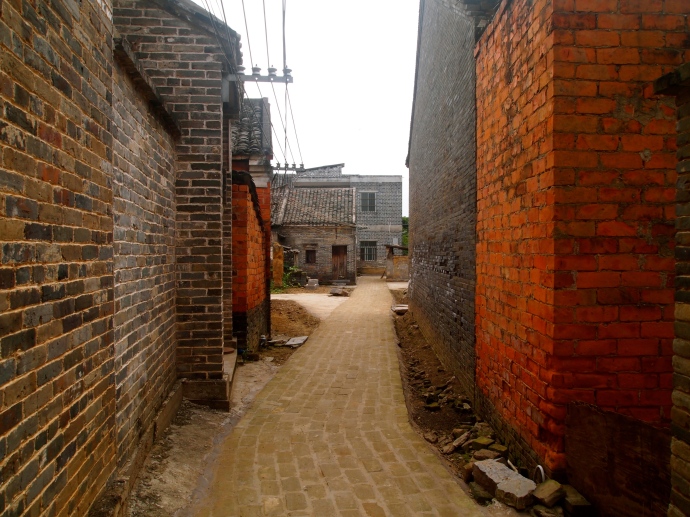




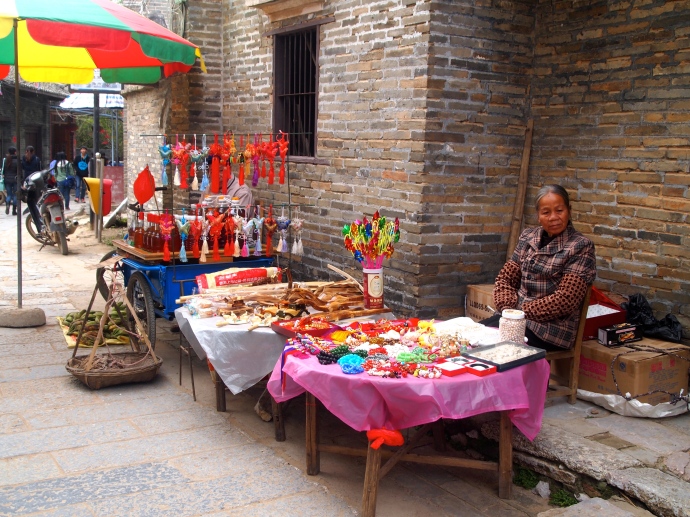




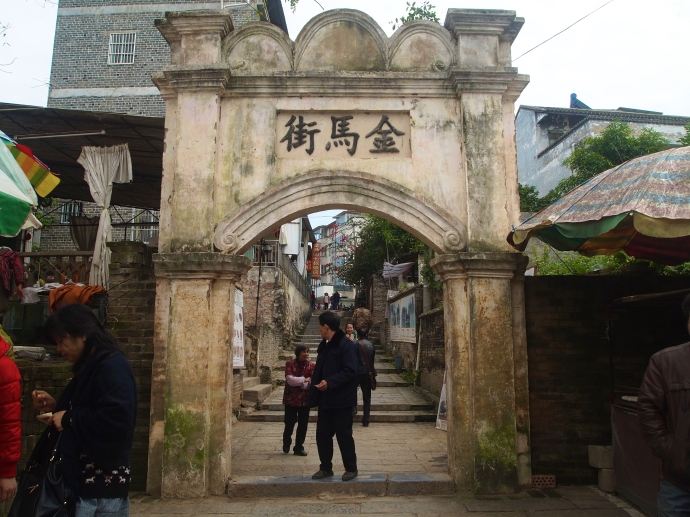

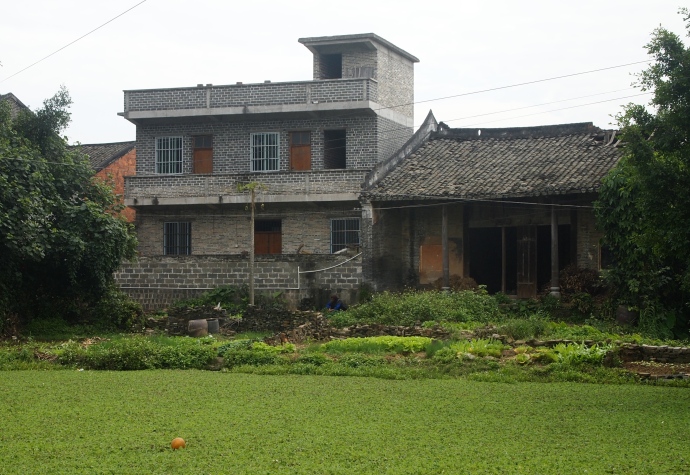
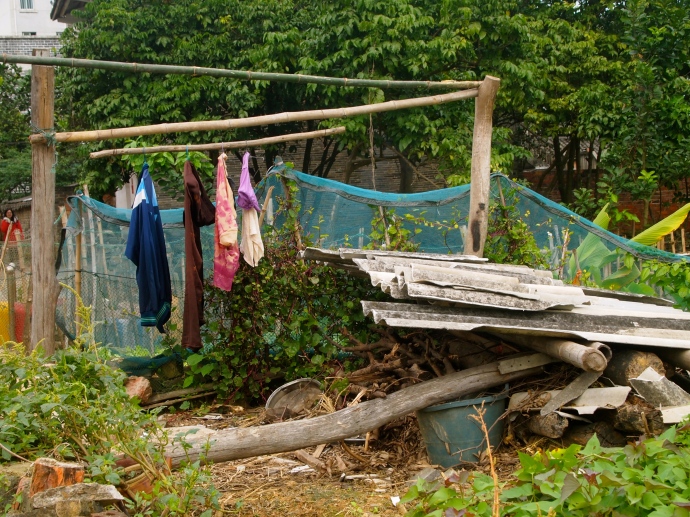

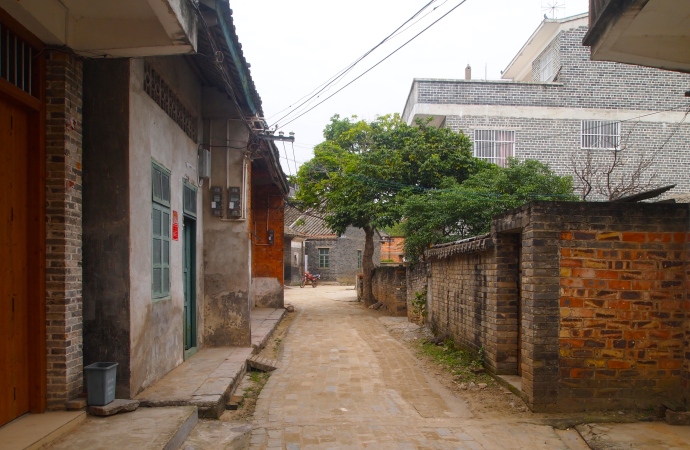
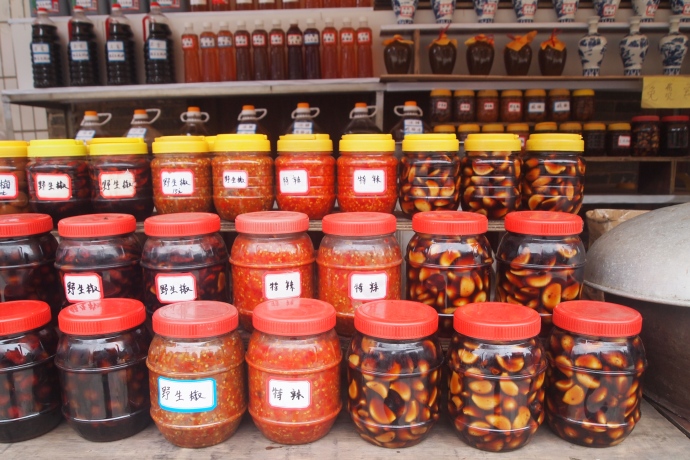
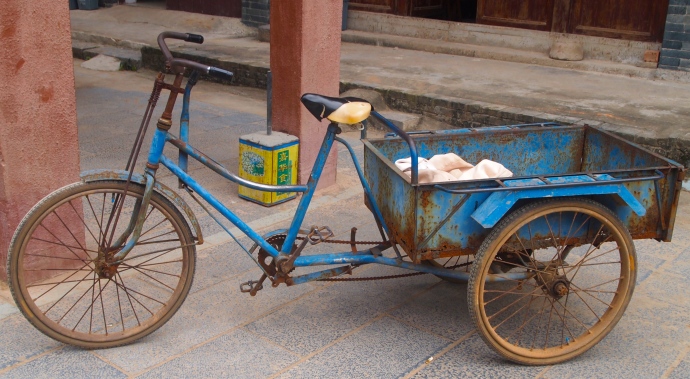

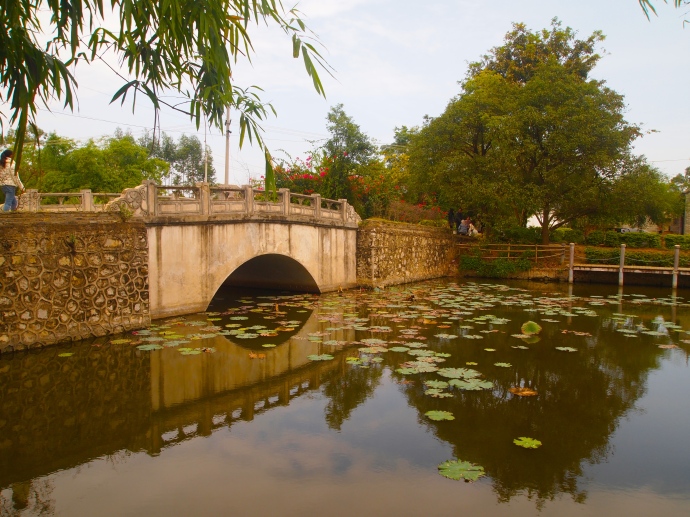

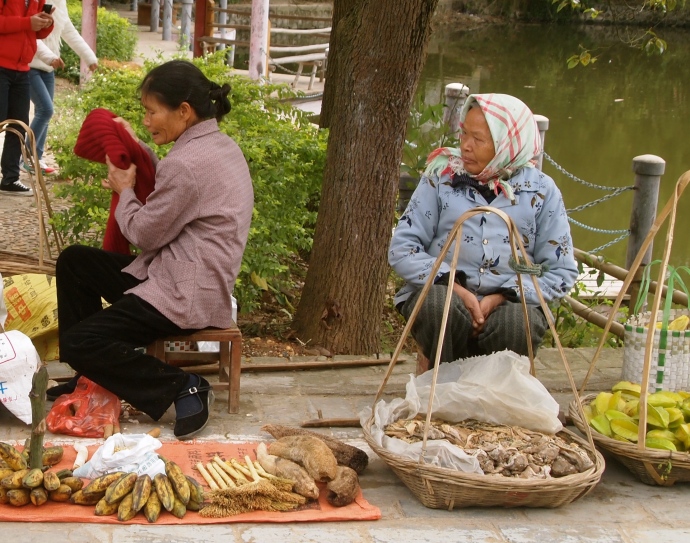
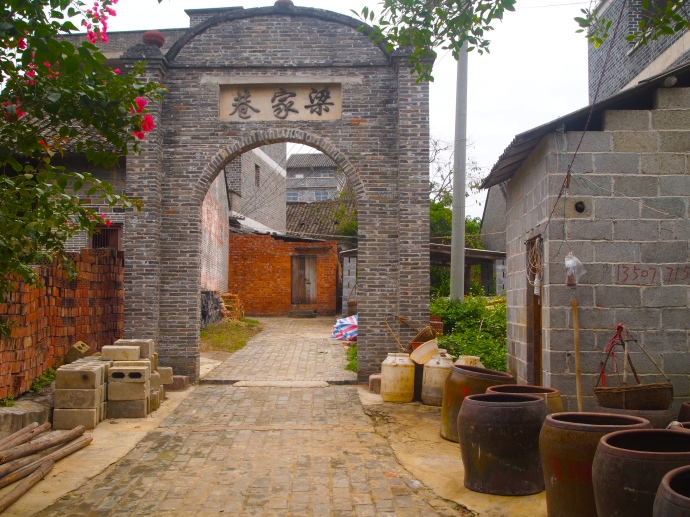
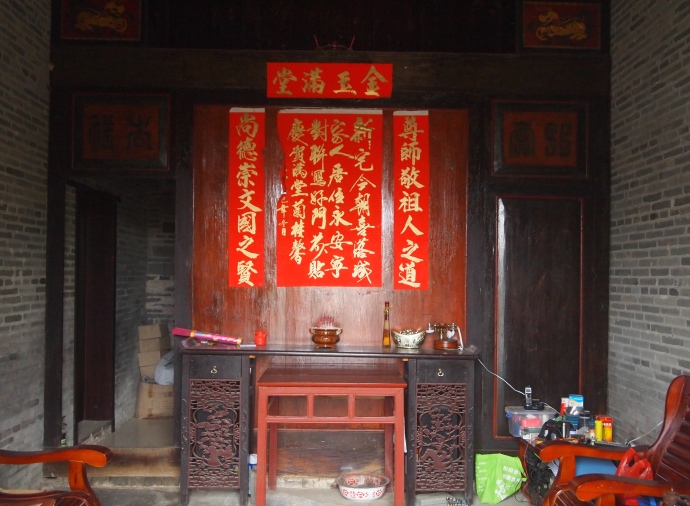
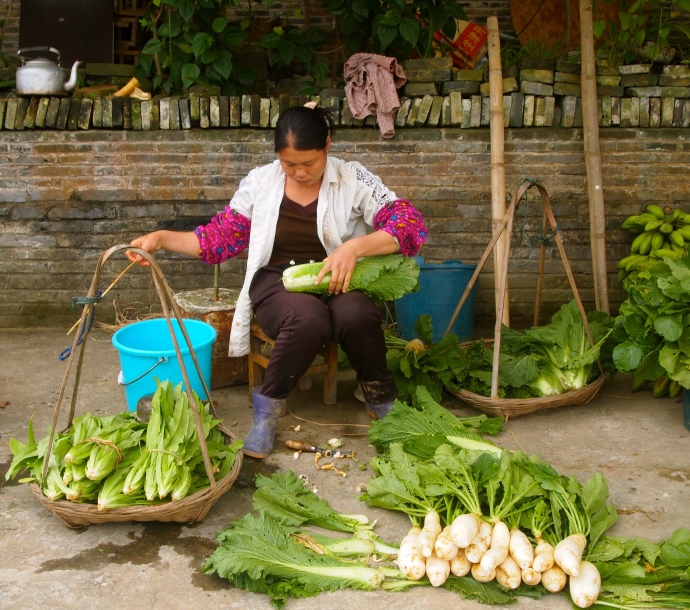
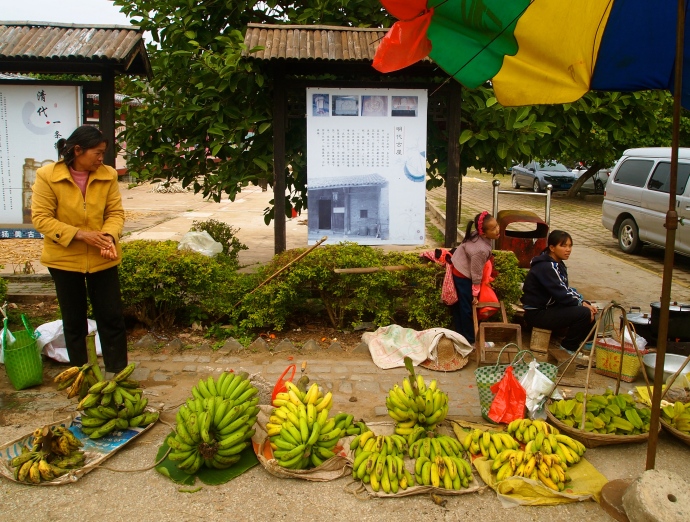
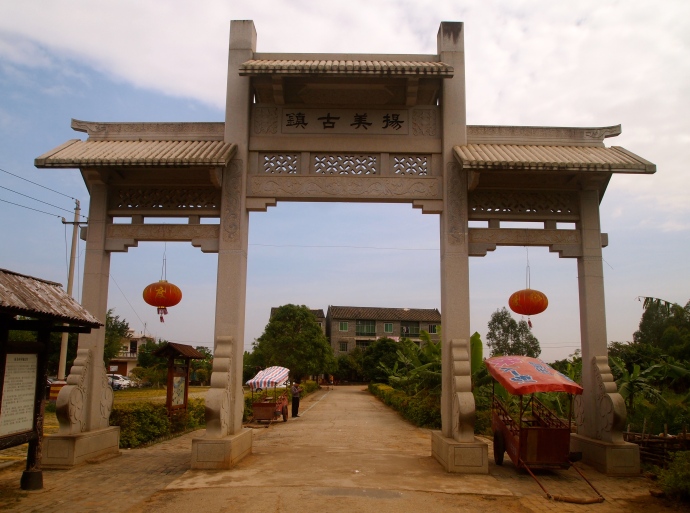

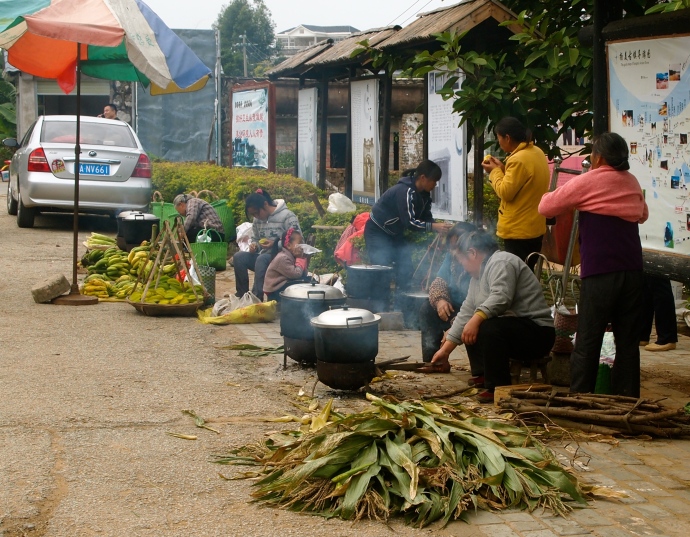


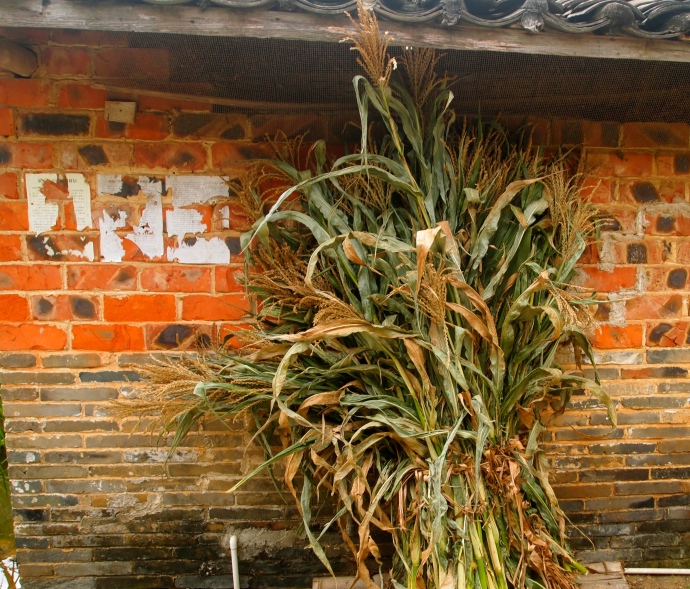
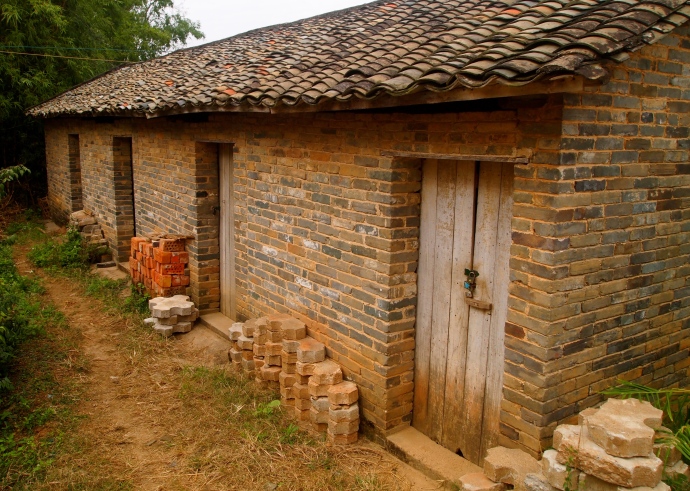
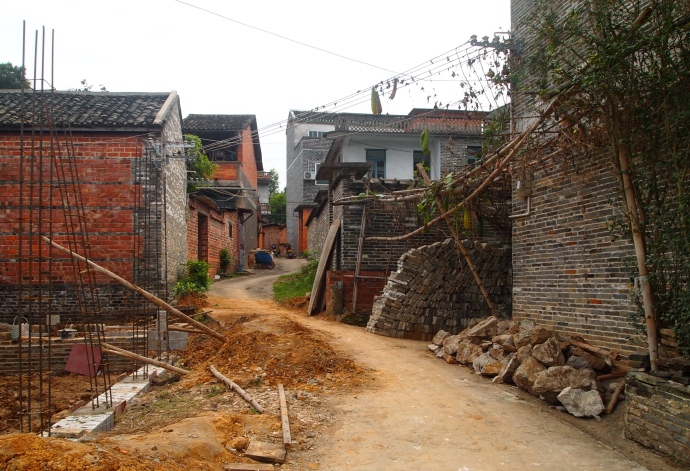
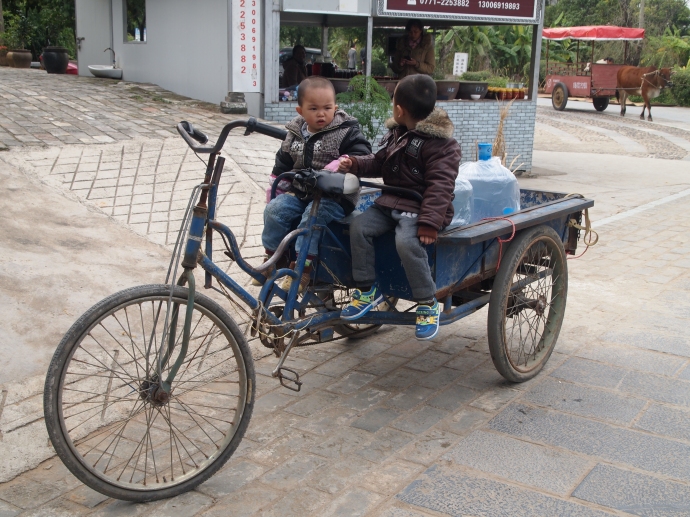
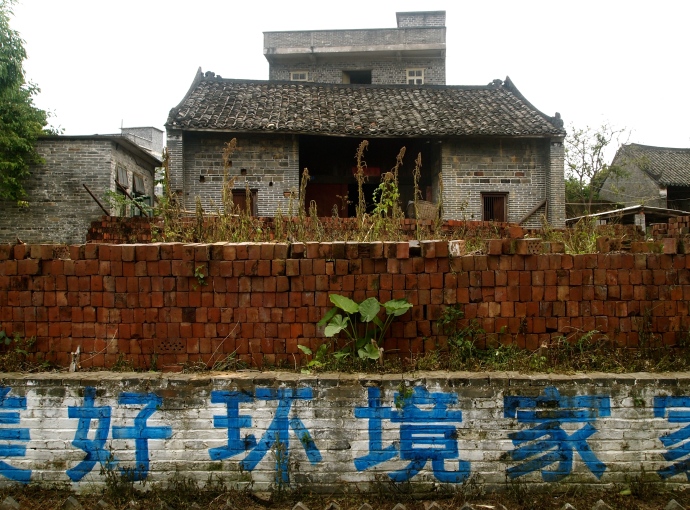

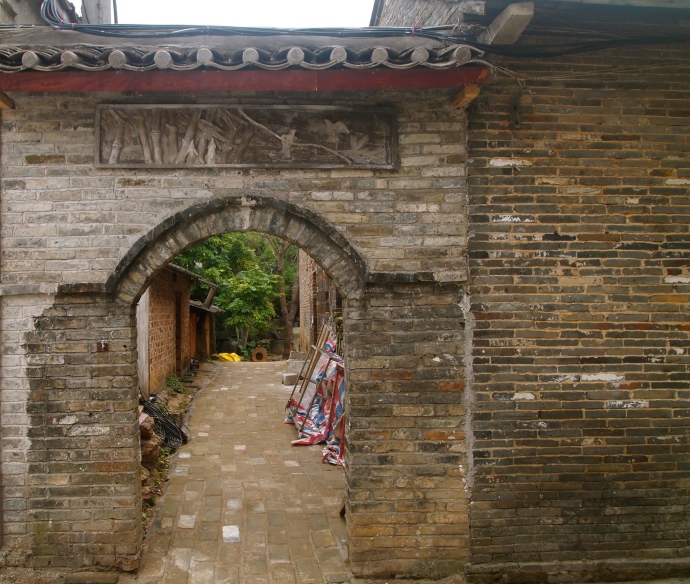
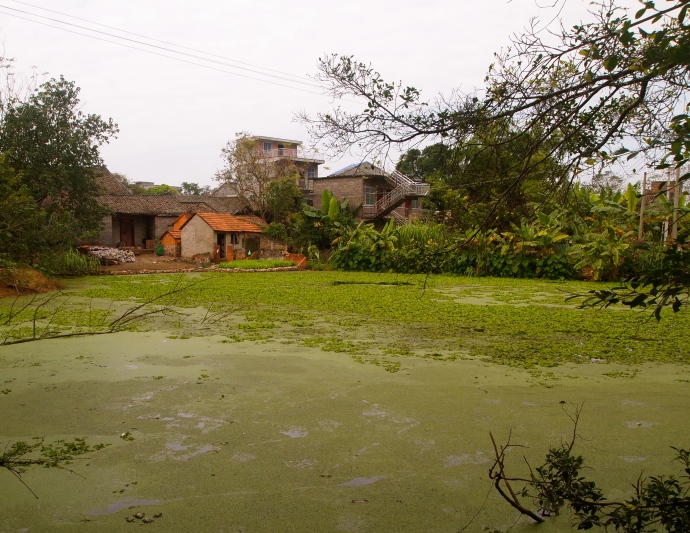


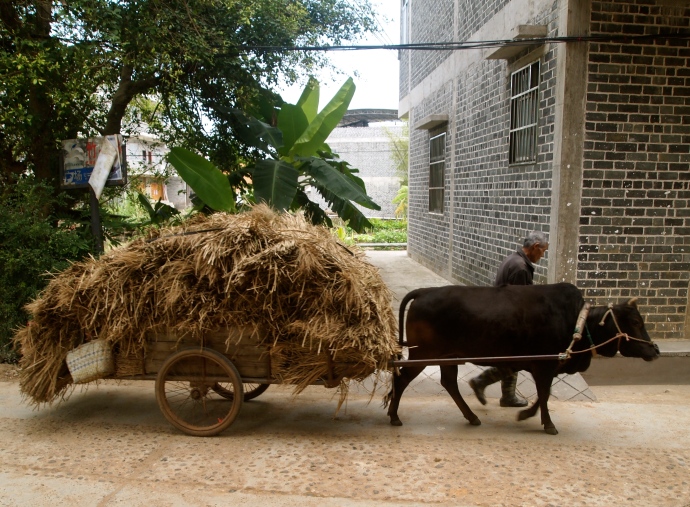
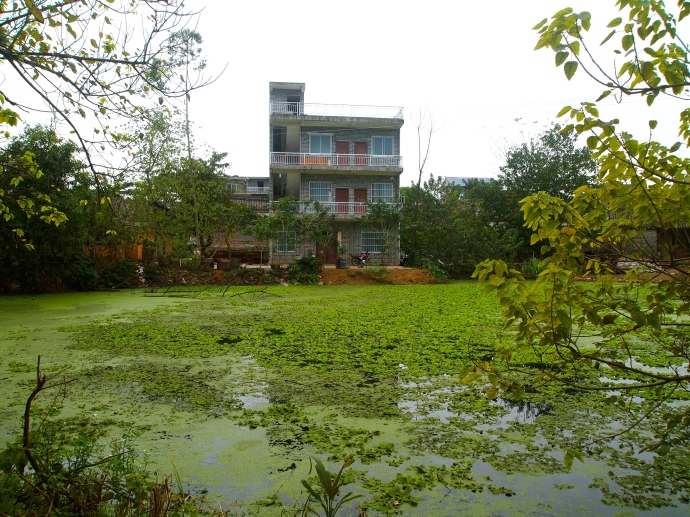
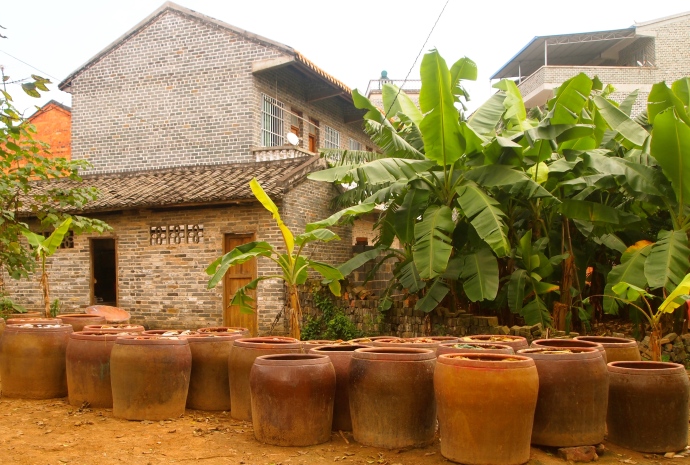






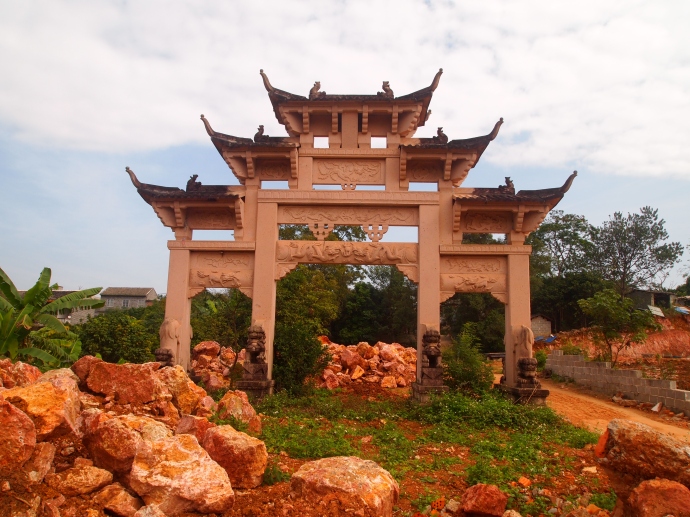

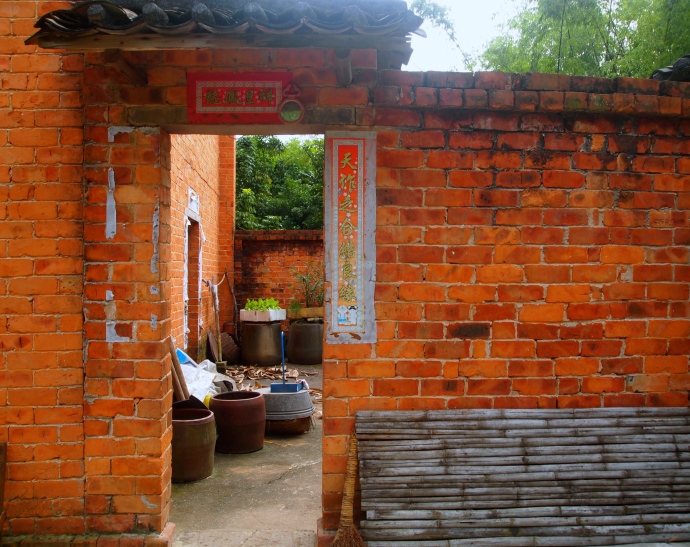

Oh Kat, I can see why you were so disappointed. I sure won’t be visiting that visit if I’m again in China.
LikeLike
It’s not one of the bigger tourist towns, Dai, so it wouldn’t really be on anyone’s itinerary. It was just something to do outside of Nanning, which I find incredibly boring. 🙂
LikeLike
I think you are being too hard on yourself re the photos, I find all of your photos interesting. Maybe the light isn’t great, but you manage to find quirky and to me, a charming portrait of a country I shall never visit for myself. So thanks Cathy for the journey 🙂
LikeLike
Thanks, Jude. I’m glad you find the photos interesting. I do try my best to capture what I can of China, good and bad. No use trying to doctor it up or only focus on the beauty. That really wouldn’t be a true picture at all. 🙂
LikeLike
I see what you mean about the lack of refinement, lots of messy, unkempt places with the odd flash of beauty if you manage to find it. Well done for sneaking back out of the private homes without being spotted 🙂
LikeLike
Yes, I had hoped for more, Gilly. I did enjoy Ping’An and Yangshuo, as far as towns go, much more than this. I did find some beauty in those towns. But then, they are more on the beaten tourist route, and so are more spiffied up. 🙂
I’m sure glad I didn’t encounter any residents when I accidentally stepped into those houses!
LikeLike
I rather like that low light for photography, and I find your photos quite charming. Even the unkempt, drab qualities draw my attention for taking pictures – it’s that contrast that makes it interesting.
LikeLike
Thanks so much, Carol. I’m glad you liked them despite their unbeautifulness! 🙂
LikeLike
Not sure what to say in certain respects, Cathy. They certainly don’t seem to have much in the way of home comforts and as you say, there’s a lot of rather drab about. It’s just a totally alien culture to us, isn’t it, and they look so poor, some of them. Poor but happy? I suppose they’ve never known any different. And travel is tortuous, Cathy! I’d be tearing my hair out 😦 But if I think back to your karst- a whole different beautiful world 🙂 And the reused oil and food problems. It’s an experience, ok! You’ll have stories to tell when you get home 🙂
LikeLike
It’s strange, Jo, how home comforts are practically non-existent. Even in my apartment, I only have hard wooden furniture, no big soft sofa to lounge on. It’s always hard to get comfortable and I often find myself sitting on my bed, pillows propped behind me, with my computer on a tray over my lap. In Oman, I had such a lovely house, with a big soft couch (old, but still comfortable!) and two big cushiony chairs. The Chinese homes seem to only have this hard wooden furniture. I wonder if maybe the new apartment buildings going up like wildfire are being decorated and filled with more comfortable furnishings. These new complexes are gated communities with lush parks between the high-rises.
So many people seem so poor here, but you can definitely see the opposite extremes in the fancy new cars and SUVs and the clothes people wear. It is such an alien culture to us. I often remind myself that 1 out of 4 people in the world live in China, and I realize that this is the NORM, not the aberration!
You know, Jo, the people do seem happy. There is a lot of community. When I walk around I always see groups of old people sitting around on little stools, playing all kinds of games (cards, mahjong, checkers, you name it), or dancing or singing, I’m really just amazed by it all. And I think of how isolated many of us in the west are, driving around in our boxed-in cars, scurrying about from place to place. And you’re right, most Chinese have never left the country so they don’t know how the rest of the world lives, except through TV or movies.
Travel IS tortuous and I really do have to gear myself up mentally every time I venture out. You are so right though about China’s natural landscapes: I love the karsts and the rice terraces, etc. I’ll be so glad to have Mike here to travel with me through some more areas of China in late January. I’m thinking of other SE Asian countries I could visit over the holidays and so far I’m focused on Burma/Myanmar, Laos, and Malaysia. We’ll see. I need to decide soon to get my visas in order. 🙂 xxx
LikeLike
I found your images beautiful, interesting, and in some instances, compelling in the way that they tell a story. But I do understand about clouds and haze, and if you’re having stomach troubles on top of that, ugh. No wonder it all seems drab. One good thing about clouds and haze is that they make colors pop, especially if you underexpose your photos.
LikeLike
Thanks so much, Robin. I’ll have to take to heart what you say about underexposing the photos on a cloudy day, although I have no idea how to do that!! I really need to practice more with my manual settings. 🙂
LikeLike
I find all the photos interesting – even the drab ones – as they show what it’s like in this part of China. I do love those large pots and do think (as you suspected) that they are used for fermentation. Too bad that language continues to be such an immense obstacle. Wouldn’t it be wonderful to carry on a little conversation with the bus driver or a market stall woman and that way find out more about this village…
LikeLike
Thanks so much, Annette. I felt depressed while walking around that village as I just didn’t find it all that interesting, or all that “ancient.” Ping’An, where I stayed when I visited the Longji Rice Terraces, was much more interesting. And Yangshuo is a very charming town, but then of course that one’s really done up for all the tourists. I know there are other villages that are more interesting, and more charming. It’s a lot more difficult getting to these places than it was in Korea and Oman because of the sheer size of the country and the transport options. It’s overwhelming sometimes. If I only have a weekend to go somewhere, I spend most of my time in transit. It’s a whole different experience than those two smaller countries, where you could easily visit any place in the country on a weekend. I guess I was spoiled by those easy countries. 🙂
LikeLike
Cathy – what just occurred to me: could you make an arrangement with a local driver to take you out on certain weekends? Maybe your Chinese friend could help you with this. This way you get to places more directly and perhaps more safely? Just a thought.
LikeLike
I should ask about it, Annette. In theory it sounds like a great idea, as long as the price is right. I’ve heard it can be quite expensive. We don’t get paid much here in China (I make less than half what I made in Oman), but as the cost of living is generally low, we can get by and even travel. But that’s as long as you’re taking advantage of the low price transport like buses and trains. Go to the high end things, like taxis and airplanes, and the cost goes up substantially. 🙂
LikeLike
I found all of your photos really fascinating, Cathy. They really do show the traditional way of life in China. It’s not glamorous at all, but one wouldn’t expect it to be. I really admire you for being able to go exploring unknown places all by yourself, without even knowing the language. xx
LikeLike
Thanks so much, Sylvia. I know, China isn’t glamorous, although many of the natural landscapes are stunning. Some of the towns built around the more popular spots do have their charm, such as Ping’An at the Longji Rice Terraces and Yangshuo in Guilin. I’ll be taking Mike back to Yangshuo and then into Yunnan province, which is supposed to be lovely. There are also some Dong Villages not far from Longsheng, near the rice terraces, that are supposed to be charming as well. This one was very close to Nanning, so was worthy of a day trip, but I certainly wouldn’t put it on anyone’s tourist itinerary, unless one has endless time to travel in China. 🙂
Thanks for your words of admiration. It is scary to venture out here without knowing much Chinese, so I do feel a certain sense of accomplishment when I’m able to persevere and to get to my destination, find my way around, and then find my way home. 🙂
LikeLiked by 2 people
I’m in awe. 😀 xx How will you spend Christmas Day?
LikeLike
Thanks, Sylvia. I don’t know what I’ll do for Christmas. I do have the day off, so maybe I’ll go out for a walk somewhere. China doesn’t celebrate Christmas, so it will be like any other day in many ways. I’ll definitely talk to Mike and the kids. 🙂
LikeLiked by 1 person
I’d like to visit little villages like this in China one day!
LikeLike
I hope you can, London Caller, but I’d recommend other villages besides this one. This really didn’t have much to offer in the way of traditional culture. 🙂
LikeLike
All admiration for attempting the bus journey by yourself Cathy! And I think too that your images do a great job of recreating for us the reality of rural life in China 🙂
LikeLike
Thanks so much, Madhu. And that one wasn’t even one of the longer journeys I’ve taken, but for the short distance, it seemed like it took forever!! I’m glad you like my images. I guess they do depict the simple village life in China. Happy holidays! xxx
LikeLike